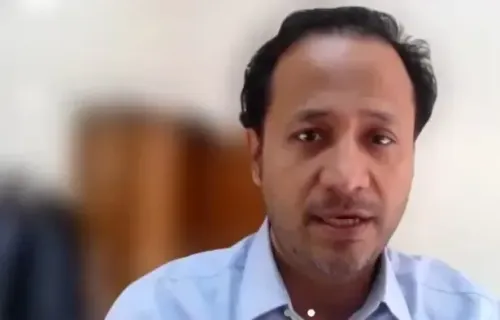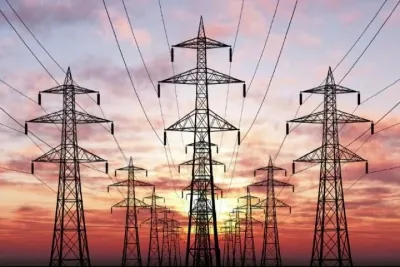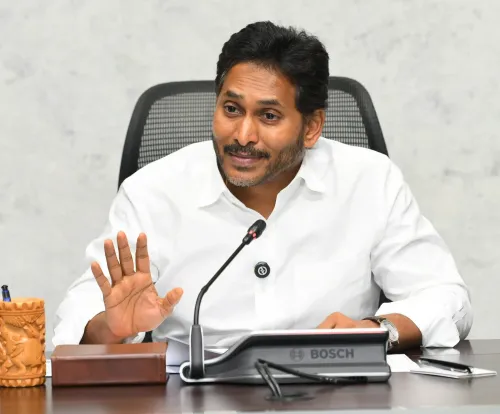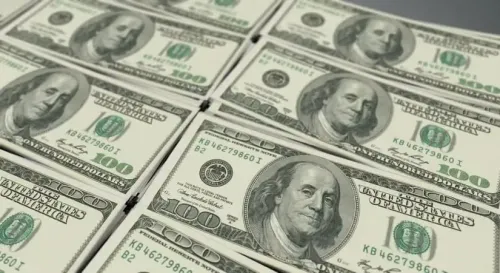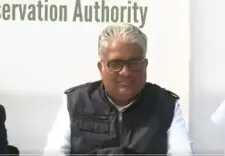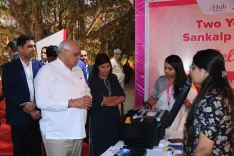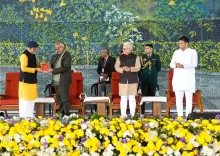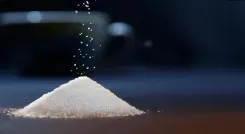Why Was Bangabandhu’s Image Defaced in the Independence Memorial Mural?
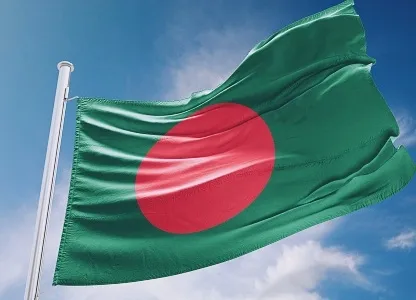
Synopsis
Key Takeaways
- The mural of Bangabandhu has been vandalized, highlighting ongoing tensions in Bangladesh.
- Students linked to previous protests carried out the defacement.
- The mural commemorates significant events from the Liberation War.
- Vandalism against historical symbols reflects a broader struggle for national identity.
- Approximately 1,500 memorials have been damaged since the current government took office.
Dhaka, July 18 (NationPress) In another disturbing act of vandalism targeting the historical symbols of Bangladesh’s Liberation War in 1971, the representation of Bangabandhu Sheikh Mujibur Rahman in the Independence Memorial Mural 'Arjon' has been marred with ink.
This incident occurred on Thursday night at the Modern Crossroads in Rangpur City, where a group of students linked to last year’s violent uprising used spray cans and black paint to deface the mural, employing a beam lifter from the Rangpur City Corporation, as reported by the leading Bangla daily, Prothom Alo.
The Independence Memorial Mural 'Arjan' illustrates the pivotal events of March 28, 1971, when the courageous residents of Rangpur confronted the cantonment armed with batons, sticks, spears, maces, and bows and arrows during the early stages of the nation's Liberation War against Pakistan.
Officially inaugurated in 1999, the mural stands at an impressive height of approximately 35 feet.
“The emblem of Sheikh Hasina's authoritarian regime has been removed from various sites. I requested the Students' Movement Against Discrimination and the NCP to take down Sheikh Mujibur Rahman’s image from the mural at Modern Mor, but they did not act. Therefore, we, the wounded fighters of July, took it down,” quoted Rajibul Islam, a participant in the vandalism, in Prothom Alo.
Earlier in April, a radical mob destroyed the Martyred Intellectuals Memorial located in Dhaka's Mirpur area, which was a significant symbol of the atrocities committed by the Pakistan Army during the Liberation War.
The video of this demolition quickly went viral, prompting a strong backlash from numerous Bangladeshis on social media, who condemned the distressing act that reveals the ongoing lawlessness in Bangladesh under the interim government led by Yunus.
Experts have labeled this vandalism as an affront to the martyrs and a component of the interim government's appeasement policy towards Pakistan.
The Mirpur memorial honored prominent figures who sacrificed their lives for the country’s liberation during the conflict with Pakistan.
In a similar vein, the mural at the Liberation War Memorial Mancha in Lalmonirhat district was also destroyed at the behest of the Yunus-led interim government in March.
This mural encapsulated significant moments from the 1950s language movement, the historic March 7 speech, the War of Independence, the establishment of the Mujibnagar government, the dawn of a new era in independent Bangladesh, the 1971 genocide by Pakistan, the triumph of freedom fighters, the surrender of the Pakistani army, and jubilant crowds waving the national flag.
The Dhaka South City Corporation (DSCC) has also renamed various roads, buildings, and structures that were previously dedicated to Bangabandhu Sheikh Mujibur Rahman, his family members, and Awami League leaders. For instance, Bangabandhu Avenue has been renamed Shaheed Abrar Fahad Avenue, as per an order from the DSCC.
Since the Yunus government took power in August 2024 following the fall of the Awami League government led by former Prime Minister Sheikh Hasina, approximately 1,500 sculptures, murals, and memorials have been vandalized, set ablaze, or uprooted across the country.


